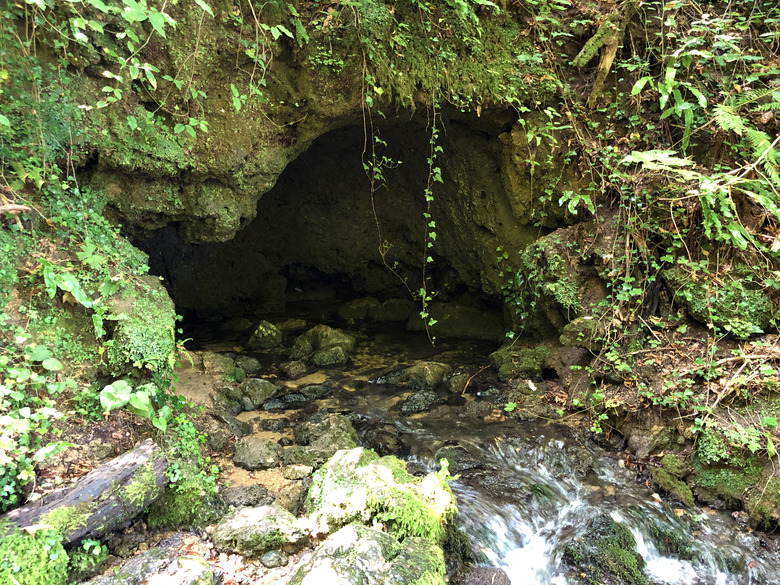How Do Plants Use Water In Photosynthesis?
Plants use a complex chemical reaction called photosynthesis to create food from light energy, carbon dioxide from the atmosphere, and water. Each of these performs a critical portion of the photosynthesis process, dependent on the others. While light energy can be easily absorbed from the sun and carbon dioxide from the atmosphere, water is sometimes scarce. Not only is water used directly in the process of photosynthesis for its hydrogen, it is also used to prevent dehydration, indirectly supporting the successful creation of food for the plant.
The leaves of plants contain openings called stomata, which are used for the exchange of gases. Carbon dioxide, combined with water in photosynthesis, is drawn in through the stomata. Oxygen, a byproduct of the process, is released through these openings, along with water vapor in a process called transpiration. During dry seasons, however, the plant must conserve moisture as much as possible. In order to do this, the plant closes the stomata, preventing the escaping of water vapor. The stomata can only be closed through use of guard cells, which are filled with water to close the stomata, and seal moisture within the plant.
In addition to the indirect support that water offers the photosynthesis process, it is also necessary for the chemical reaction that takes place. During this process, the light energy reacts with a pigment called chlorophyll, and excites the electrons. The resultant charge converts the light energy into chemicals called adenosine triphosphate, also known as ATP, and nicotinamide adenine dinucleotide phosphate, or NADPH. These chemical compounds are used to store the energy absorbed from the sun. During the energy storage process, water molecules, which are made up of hydrogen and oxygen, are split so that these elements are separate. The hydrogen is then combined with carbon dioxide with the help of ATP and NADPH, to become sugar, which is used as energy for the plant. The process of turning carbon dioxide in the atmosphere into a usable form of energy is called carbon fixation.
References
Cite This Article
MLA
Enne, Vee. "How Do Plants Use Water In Photosynthesis?" sciencing.com, https://www.sciencing.com/do-plants-use-water-photosynthesis-5513808/. 22 November 2019.
APA
Enne, Vee. (2019, November 22). How Do Plants Use Water In Photosynthesis?. sciencing.com. Retrieved from https://www.sciencing.com/do-plants-use-water-photosynthesis-5513808/
Chicago
Enne, Vee. How Do Plants Use Water In Photosynthesis? last modified August 30, 2022. https://www.sciencing.com/do-plants-use-water-photosynthesis-5513808/
